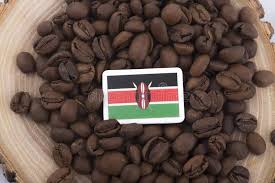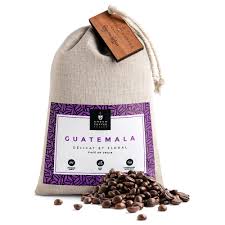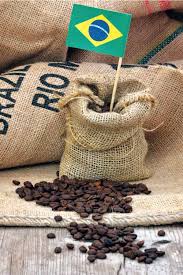What makes coffee beans the best, and where do the coffee beans come from? Well, there are many factors that are crucial to the experience of drinking coffee. This article will give several keys to grow and brew coffee.
Not only that, but it will also show you some coffee selections from countries that produce the best coffee beans around the world.
Geology, geography, history, culture, botany, culture, landscape, and the ideal beans all play vital roles in making coffee. To produce a cup of coffee, it needs expertise and also, being a coffee lover.
Growing Coffee
The quality and character of a coffee depending on the elevation, micro-climate, and soil on which it is grown. That is why experts in coffee-making search for the origin of coffee before growing and cultivating it.
One major factor that determines the quality of a coffee is the type of coffee beans used. For example, the coffee produced by the Arabica beans is higher in quality than that of the Robusta plant.
Coffees flavors are generally known based on where they came from. Simply put, the location of the coffee plays an important role in the quality and flavor of the brewed coffee.
Another factor that determines the quality and flavor of the coffee is the way it was processed and harvested. Also, the way it is stored and shipped is an additional factor. It helps to determine if the natural flavor remains the same.
The Perfect Roast, the Perfect Grind
The flavor and the characteristics of your coffee brew depend on your coffee roasters. There are multiple intensities of roast such as light roast, medium-dark roast, etc. Each type of roast has a different quality of coffees.
For example, a light roast is somewhat acidic and it brings out the fruity and floral part of the coffee. For the darker roast, it brings out deep flavors such as chocolate, caramels, and nuts.
Another key factor to produce great coffee is to have the perfect, precise, and consistent grind from your coffee beans. Whether a fine powdery grind or a coarse grind, it is essential for each type of coffee you want to make is precise, since each type requires different coarseness.
Coffee and Consciousness
Culture and ethics go alongside each other in coffee making. The best coffee to take is the coffee you know the origin of its materials. For good coffee, good coffee practices and environmental practices are important.
The Culture of Coffee
One factor to keep in mind is the culture of coffee. The culture of coffee determines how you drink coffee. On the other hand, coffee plays a role in the culture.
Around the world, coffee houses, coffee shops serve as a place where people meet, congregate, and have discussions. This promotes legendary traditions or culture. Each region where coffee is grown has factors that affect it.
For example, the particular region’s climate, soil, agricultural practices, and processing methods of each region affect the flavor and uniqueness of coffee. Now we are going to consider some coffee growing countries that have the best coffee product and practices, and learn about what makes them unique.
Ethiopia
 Ethiopia is the first place to tour. Why?? Ethiopia is the country where its coffee heritage started as a religious practice. This is the same place where coffee got its original name.
Ethiopia is the first place to tour. Why?? Ethiopia is the country where its coffee heritage started as a religious practice. This is the same place where coffee got its original name.
Today, coffee still plays an important role in Ethiopia. Coffee ceremonies are usually observed in Ethiopia as a part of their longstanding culture.
In Ethiopia, green coffee beans are roasted, grounded, and then brewed. Then, it is poured gracefully and ceremoniously, in three rounds. We can enjoy Ethiopian coffee even without a special ceremony.
There is a place in the central highlands of Ethiopia called Sidamo, where rich and flavorful Arabica coffee plants grow slowly due to their high elevation. Because of this landscape, the coffee plants take time to grow. The slower it grows the more time it has for its complex flavor and ingredients to develop.
Yemen
 We now move to Yemen, a place that puts the coffee on her historical map. Coffee became widespread in Yemen through a governor of the Ottoman Empire.
We now move to Yemen, a place that puts the coffee on her historical map. Coffee became widespread in Yemen through a governor of the Ottoman Empire.
He came to Yemen in the 16th century and loved coffee. He then introduced it to the Sultan named Suleiman.
The Sultan loved it too, and gradually, coffee became widespread throughout the Ottoman Empire, even in cities like Vienna and so many others.
Today, Yemen is known as a lover of gourmet coffee on the world map. And their coffee, Yemeni Udaini is known for its notes of floral, spicy, and chocolaty taste coffee beans.
Kenya
 Kenya has regions that grow excellent coffee. Such regions include Mt.Kenya and Nairobi, Nyeri, Thika, Marung’a, etc. The regions of Kenya are known for producing complex coffee and different varieties of coffee like the SL28, African K7, and so on.
Kenya has regions that grow excellent coffee. Such regions include Mt.Kenya and Nairobi, Nyeri, Thika, Marung’a, etc. The regions of Kenya are known for producing complex coffee and different varieties of coffee like the SL28, African K7, and so on.
One of such distinct varieties is the Twiga which has a sweet and juicy aroma, combined with a chocolaty flavor. Although the coffee industry in Kenya is not big, it is gradually progressing and growing.
The situation of the coffee farmers has improved since the end of British rule. Kenya coffee farmers are really working hard to improve their production and quality of their coffee.
Indonesia
 The climate and the high elevation of Indonesia’s island make it a high potential landscape to grow high-quality coffee. Both Arabica and Robusta coffee beans are grown in Indonesia.
The climate and the high elevation of Indonesia’s island make it a high potential landscape to grow high-quality coffee. Both Arabica and Robusta coffee beans are grown in Indonesia.
The Arabica coffee is produced in regions like Bali, Papua, the island of Sumatra, etc. Sumatra coffee is known for its processing method called “giving Basah”.
The Sumatra process makes high-quality, low acid and, an earthly flavor coffee. This process is also used for the Sumatra’s Mandheling and the Gayo coffee, grown in the Aceh region of Indonesia.
This Sumatra Mandheling coffee is known for its fruity and smooth flavor. This is the coffee that introduced the rest of Sumatra coffees to the world.
Costa Rica
 Costa Rica has taken coffee-making to the next level. In Costa Rica, all coffee produced from the Arabica coffee plant. The coffee plantations are owned by individual farmers.
Costa Rica has taken coffee-making to the next level. In Costa Rica, all coffee produced from the Arabica coffee plant. The coffee plantations are owned by individual farmers.
Sunshine and rain, high altitude, volcanic soil, mountainous terrains all add up to making different varieties of coffee in Costa Rica. The coffees of this country have a bright aroma, especially the Tarruza coffee from the Tarruza region which has milk chocolate and cream flavor.
The coffee of Costa Rica responds well to the various type of roast to give different flavors and tastes. In Costa Rica, an organization such as the IWCA (International Women’s Coffee Alliances) has been established successfully and will be a model for other countries to follow. These organizations aim at expanding the coffee ranges, increasing the biodiversity and complexity of coffee.
Guatemala

Guatemala is another South American region where coffee grows successfully. Guatemala has many varieties of coffee you can choose from. The several important conditions in the regions of Guatemala make it an excellent landscape with a perfect environment to produce coffee with different desired characteristics.
The regions for growing coffee in Guatemala include Guatemalan Antigua, the Fraijanes Plateau that produces full-body, acidic, and sweet-tasting coffee.
Brazil

Brazil has been the pillar of coffee production in the world and is the largest coffee manufacturer. Brazil produces different types of coffee beans, both Arabica and Robusta coffee plants for different types of coffee like instant coffee, espresso, and so on.
Brazil has the best conditions and landscape for growing coffee. It is rich in rainforest and the coffee is not usually grown at high elevation. This is why Brazilian coffee is known for its mild and balanced flavor and aroma.
Different varieties of Brazilian coffee include Bourbon Santos, Carmody de Minas, Brazil Crescendo, etc. grown in different regions of Brazil. Each coffee has its own distinct characteristics that respond well to roasting.
Colombia
 Colombia is one of the countries widely known and famous for being a successful coffee producer. Why? This is because of their wide mass marketing method.
Colombia is one of the countries widely known and famous for being a successful coffee producer. Why? This is because of their wide mass marketing method.
Aside from their marketing, they stand behind the excellent coffee produced in this country. Colombia grows only Arabica coffee plants These coffee farms and lands are privately owned by individuals who love the art of coffee making.
Colombia had some excellent conditions like the presence of high altitude region which produces good, fruity, and sweet Arabica beans. Also, some coffees are grown in the shade to make a more complex flavored coffee and rich in antioxidants.
Aside from the high altitude, the style of coffee farming and harvesting adds to the uniqueness of Colombian coffees.
Vietnam

Vietnamese still drink mostly tea, but people do drink coffee – with condensed milk, or a cappuccino made with egg. Vietnam grows the hardier Robusta bean. Arabica beans contain between 1.1% to 1.6% caffeine while Robusta has between 1.7% to 2.8% caffeine, making it bitter.
Vietnam grew its coffee-producing coffee industry to become the second-largest coffee exporter and the largest Robusta bean grower. Today there are over 2.6 million owners of small 2-3 acre farms producing coffee beans, and Vietnam is doing well and continues to grow year over year exporting coffee and rebuilding the economy after its long war.
Coffee can be a cultural experience.
Various coffee cultures in different countries will produce different experiences. For example, the way you drink coffee in the States is different from how it’s enjoyed in Greece.
Factors such as the method of brewing, degree of roast, the grind of beans, and method of preparation are all important. But the most important of all is the cultural experience and the origin of coffee. This helps to add meaning to your coffee and make you enjoy it to the fullest.
Coffee Culture in India

India has a long and established coffee drinking culture. At the beginning of making a coffee, a coffee filter is usually used. Then, the ground coffee is poured into the coffee maker with the filter. The next step is to pour hot water and cover the pot and allow it to brew.
While the coffee is extracted at the bottom, hot milk is poured into the brew. This Indian coffee drink and the way it’s prepared to make a good coffee experience.
The Best Coffee for you?
Whatever you choose as your favorite coffee, you have to consider the factors that makes that special coffee the perfect fit for you.
You have to note the geology, botany, agricultural practices, and the roast type of the coffee. The quality and character of the coffee depend on these factors. The more you know about each coffee as a coffee lover, the more you will be able to choose the ideal coffee for you.
The Takeaway
In this article, we have seen what makes a good coffee. We have also seen selections of coffee and its condition, from different coffee growing countries. When you keep all the information in mind, you will find and have the best coffee to drink.
If you have any comments, please leave them below, I’d love to hear from you. If you’re a coffee lover and a dog lover check these pet supplements.


Thank you for taking me on a global trek of coffee nations! This was an informative article and I now know more about the drink I love than I ever did besides just drinking it!
I think I will try some other coffees based on your article …hopefully I can get those in K cups LOL.
John, thank you for your comments. I believe that you can find most of coffee from every country located in the coffee belt region in a K-cup
There are many K-cup providers today.
Michael
Thank you for the article , you took me on a global trek of coffee nations, I cant wait to try some other types of coffee like the one listed in your post.
I honestly did not know that much about coffee beans other than Columbia …….I wont lie I’m ready for a coffee just typing this comment. Good luck with your website
Thank you for your comments. That’s why I wrote this article, there are many places with rich coffee culture around the world.
Michael
I honestly love coffee but I always get the Folgers kind. This post was so tempting to know that certain growth methods can give the grounds a unique flavor.
That and knowing the countries where the best coffee is from. I realize I have a lot to learn and experience in terms of coffee. Where do I begin to start?
JC Carlos, thank you for your comments. Whats interesting about this article, is that all coffee is not the same. There are many factors in the landscape, soil, wheather among others that are unique to each area where its being grown, and how it tastes in your cup.
Michael